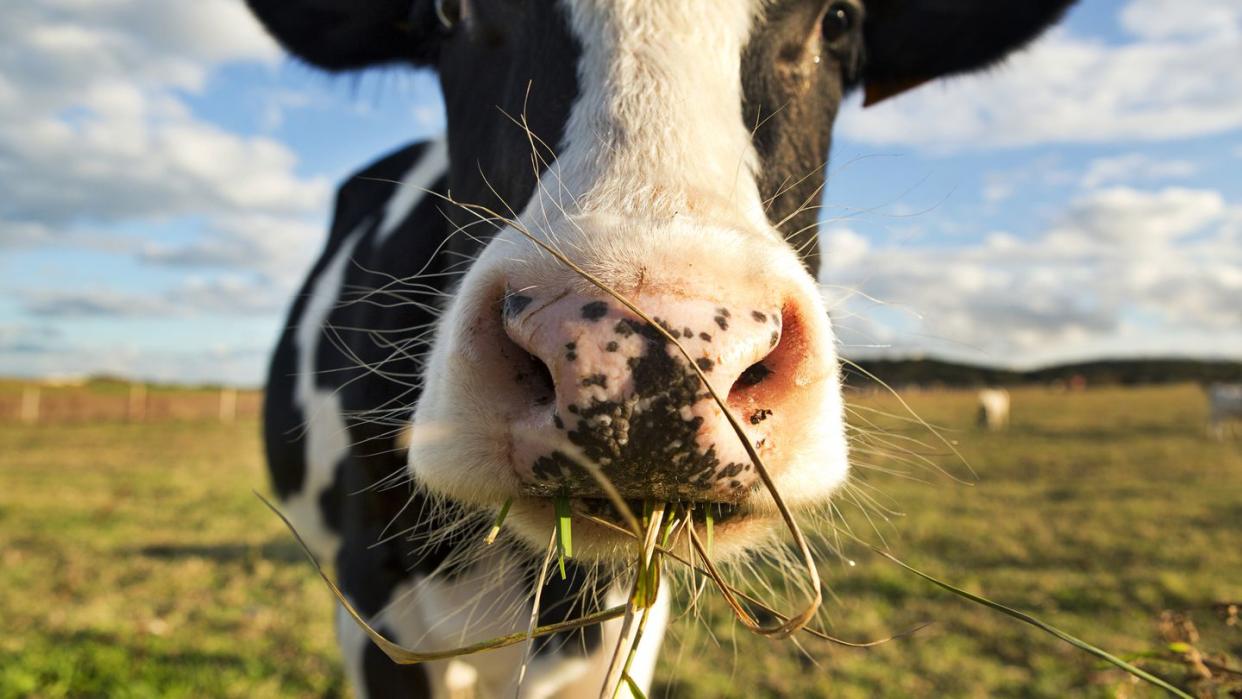A Herd of Genetically Engineered Super Cows May Just Solve the Insulin Crisis

Hundreds of millions of people rely on insulin for survival, but shortages can impact prices — along with people’s health.
Now, a new study proposes using transgenic cows to create human insulin in their milk, a process that's much more efficient than the current, transgenic yeast/bacteria method.
Although scientists have proven the concept, it'll still be awhile before an insulin-producing transgenic cow passes FDA approval.
In São Paulo, Brazil, lives a brown cow unlike any other in the world. That’s because in its DNA lies a segment that codes for proinsulin, a protein precursor for the naturally occurring hormone that 8.4 million U.S. citizens need to survive. This has the happy result of producing human insulin in cow’s milk, a transgenic technique that could transform the production of insulin around the world.
The creation of this ground-breaking bovine was a joint-effort between University of Illinois Urbana-Champaign (UIUC) and the Universidade de São Paulo, and the researchers hope that insulin-producing cows could end supply shortages and lower drug costs around the world. The results of the study were published in the Biotechnology Journal last week.
“Mother Nature designed the mammary gland as a factory to make protein really, really efficiently,” study co-author and UIUC professor Matt Wheeler said in a press statement. “We can take advantage of that system to produce a protein that can help hundreds of millions of people worldwide.”
After inserting DNA coding for proinsulin into 10 cow embryos, Wheeler and his colleagues then implanted the embryos into normal cows in Brazil — the 10 embryos produced only one transgenic calf. The team was also able to specifically target the mammary tissue, so human insulin isn’t circulating throughout the cow’s bloodstream but is instead contained to a specific area.
When the cow matured, the team unsuccessfully artificially inseminated the cow and instead produced lactation via hormones. When the resulting milk was analyzed, the liquid not only created the sought-after proinsulin, which Wheeler expected to refine into usually insulin for human diabetics, but also insulin itself.
“Our goal was to make proinsulin, purify it out to insulin, and go from there, but the cow basically processed it herself. She makes about three to one biologically active insulin to proinsulin,” Wheeler said in a press statement. “The mammary gland is a magical thing.”
This process far outpaces the typical process for creating insulin, which involves transgenic yeast and bacteria. According to Wheeler, if a transgenic cow created one gram of insulin per liter, a typical dairy cow produces 40 or 50 liters a day, then that’s an immense amount of insulin, since a typical unit is only 0.0347 milligrams — or 28,818 units per gram. This means that a whole country’s insulin needs could be supplied by just one small dairy farm operation.
However, this one cow is only a proof of concept, and a such an operation would also require transgenic bulls and Food and Drug Administration (FDA) approval, which can be a long and winding road. Earlier this year, a U.K.-based company announced that it hopes its disease-resistant pigs will get FDA approval this year, even though the pigs were first created back in 2015.
So while the insulin cow shows promise, it’ll still be some time before things start moo-ving along.
You Might Also Like

